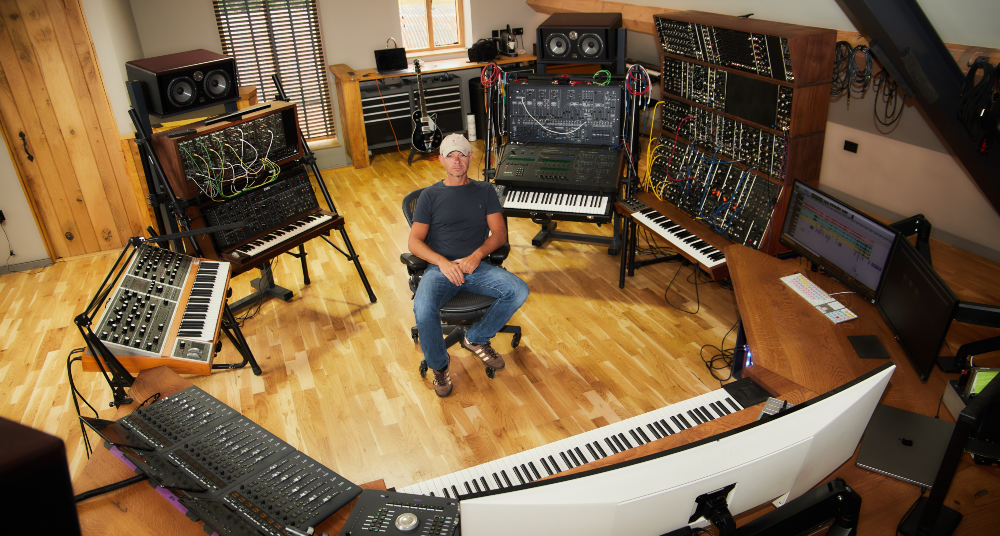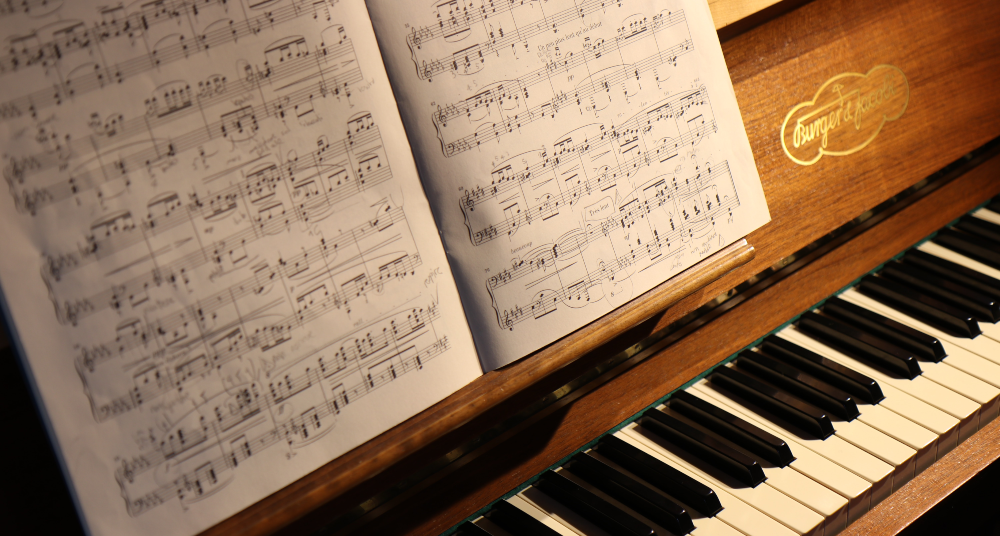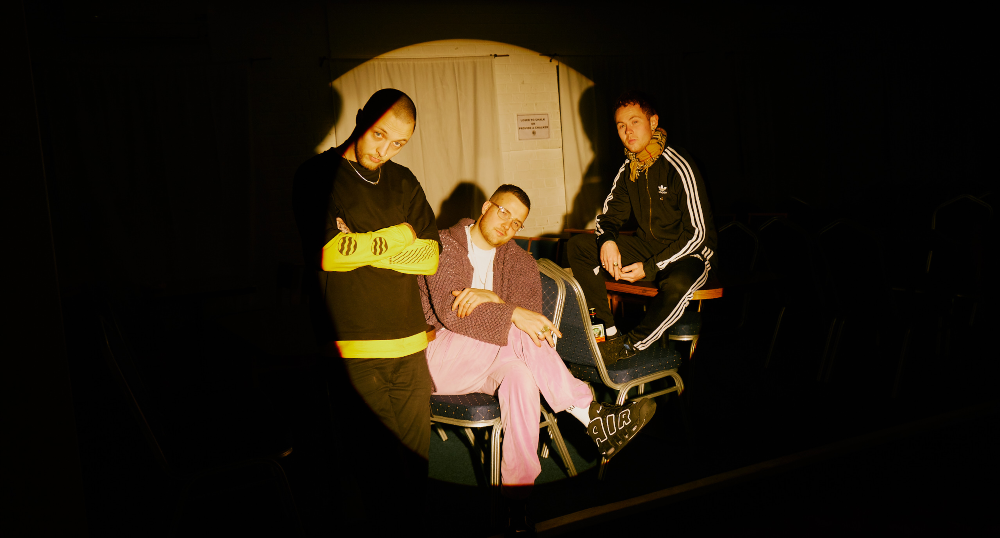In 1976, I'd just left school and found myself in the midst of a very exciting time in the UK music scene, disco was happening and so was punk.
As subcultures go, the punk scene was a very diverse moment and its stars included Jayne County. Outspoken and glam, Jayne was ‘Wayne’ back then, Wayne County and the Electric Chairs. Jayne was a star of the Warhol Factory, but butched it up ever so slightly as Wayne, and it wasn't long before the bouffant came out and Jayne revealed her true self. Storming her way through Paranoia Paradise as Lounge Lizard in Derek Jarman’s film seminal punk film Jubilee in 1978, I was even more obsessed.
On the disco scene, a star named Sylvester shone bright. Sylvester crossed boundaries with a soaring falsetto over the pulsating beats of Patrick Cowley. Sylvester would not have classed themselves as 'drag' in the strict sense of the word, but the artistry of Sylvester's looks and talent gave them the allure of a modern gender defying beauty. There's no doubt Sylvester was a true non-binary pioneer.
You might be thinking these two disparate scenes had nothing much in common, and you'd be wrong. In fact, queerness was abounding everywhere and really both scenes represented a freedom to express oneself beyond the fringes of 'normal' society.
The same freedom came with the new romantic movement where questioning gender, sexuality and ways of dressing were at the forefront of our thoughts. Stars such as the androgen Ronny crooned their way through an electronic drone in a trilby, and of course, Boy George cut his teeth in the coat check of the Blitz club in the late ‘70s. By the early ‘80s, he had become a fully-fledged pop sensation with his band Culture Club. Queer club land stars had officially become pop stars, activists and role models.
'In pop music, 'drag' is often used as a creative vehicle.'
Divine, the drag star of John Waters’ avant-garde cult films like Pink Flamingos, literally burst onto the stages of our clubs with HiNrg tracks created by producers Stock Atkin and Waterman (SAW). But it was an appearance on Top of the Pops in 1983 that made Divine a household name. Even today those notable performances have the power to stun.
In pop music, 'drag' is often used as a creative vehicle. From Bowie to Madonna, The Eurythmics, Queen, Cher, Elton John to Lady Gaga, it appears in many forms; Queens, Kings, a fabulous blurring of sexual identities with gender diverse lewks, camp, kitsch sometimes larger than life.
In the US, RuPaul's hit single Supermodel sashayed into the mainstream from the club kid scene in New York in the late ‘80s and ‘90s, with producer Larry Tee changing the game. The beautiful Amanda Lepore cultivated a clubland career working with Tee, the powerhouse of camp catchy hooks, and with Lady Bunny, a performer with a repertoire of their own as a music producer and an array of disco inspired songs in her archive.
In the noughties on the cabaret front, Kiki and Herb created a stir. They arrived in the UK as fictional characters, Mx Justin Vivian Bond and Kenny Mellman, with a repertoire that covered pop classics to Broadway musicals and featured a series of entertaining monologues delivered by ageing star Kiki who strung the show together.
The underground electro vibe of the noughties peaked with Fischer Spooner referencing drag with their showcase. The campest thing ever seen. The fabulous Peaches incorporated gender diverse statements in her artistic forays. This wave renewed a club scene which was crawling out of the AIDS pandemic with a glimmer of hope. References to DIY subcultures meant we were all doing it ourselves, opening new nights, creating new music on new technology, styling ourselves up and yes, dragging up too.
And in 2001, the film scene introduced a new shero in the form of Hedwig and the Angry Inch. Originally a stage play, Hedwig battles her way through a multitude of challenges with an emotional and raucous soundtrack of anthemic songs.
Fast forward to the present day where being a drag queen has captured the public imagination with renewed fervour. My socials are awash with make-up looks that are other worldly and escapist. Queens and Kings lip-syncing, swishing and ruling. Le Gateau Chocolat takes an operatic stance with a baritone that spans drag, cabaret, musical theatre and art, whilst AFAB drag Holestar has been belting her classics since 2003.
'Whatever the rules were, they've now been broken.'
Could it be that RuPaul’s Drag Race has really set a precedent for a counter-cultural scene to go mainstream, but in a different way? Our latest drag star crossing over into the mainstream, Bimini Bon Boulash, discovered their voice (on so many levels) on RuPaul’s Drag Race when constructing a song with MNEK and The United Kingdolls. The most recent development Bimini's career is a debut single God Save This Queen.
'Drag, music and performance go hand in hand,' Bimini tells me. But at the beginning of Bimini's journey, lip-syncing to other people's music really gave them a performance platform on which to build. Crediting the art of lip-syncing Bimini adds, 'I think without it we wouldn't really have the careers that we do, because it's a way to connect with the audience in bars and clubs or wherever we're working.'
Freida Slaves, whose infamous lip-syncing antics are wowing us says, 'Music is in the very fabric of my drag. I'm a dancing lip-syncing queen. And in the words of Abba, 'What would I be without a song or dance!? It's one of the most quintessential components to drag. It can make or break an act.'
In the past 15 years, lip-syncing has become part of our drag cultural landscape. Jonny Woo hosted a lip-syncing contest at the Bistrotheque and made east London drag art kookiness cool. We all piled in that snug bar for some up-close alternative drag. Nowadays drag competitions abound and we love them: Miss Sink The Pink, Drag Idol, then there's Lipsyinc 1000, Man Up and Gold Rush at The Glory, to name but a few. These competitions provide launching pads on which to explore different ways of expressing yourself. Our pubs and clubs have become ever more inventive with review shows, drag karaoke, quiz shows and bingo. And yes, all these things involve a bit of live singing and a bit of lip-syncing if the mood takes you. John Sizzle, co-founder of The Glory, sums it up, 'With a carefully chosen lip-sync we can bring you to tears, ignite your passion, get you leaping to your feet and wailing along in joyous rhapsody.'
Today we can all do 'drag' and own it, and that's refreshing, but more and more I'm seeing a new wave of artists that defy defining as non-binary, trans or drag. Whatever the rules were they've now been broken.
Emerging singer songwriter Susan Reby says, 'My experience within the music industry has been one that has been built by a community of artists who have found themselves lost within the binds of genre. My friends and I put on our own shows around the UK as we noticed that it was impossible to generalise a night of queer talent; there is so much variation and so much diversity that to create a concrete line up of similar acts, simply is impossible. The boundaries of music and art have always been pushed by drag and queer performers.'
'Drag was never one dimensional and it's not just about female impersonation. It's political and about exploring the spectrum of gender across art, music and fashion.'
Pushing boundaries and switching things up, creating iconic moments with anthemic moods that resonate. 'Music just brings people together and that's what drag does so well.' Bimini further explains. 'I feel drag and music totally complement each other and drag wouldn't exist in the form that it does today without the music.'
On the underground cabaret scene, Adam All is putting drag kings on the map. He tells me, 'Music is an integral part of my performance as a drag artist, I sing live, I sometimes even perform original pieces. As a drag artist, inviting thought and empathy is central to my work, as a result music is a vital tool in conveying my message.'
In fact, our queer cabaret, club land and performance scene is awash with fabulous diversity and talented people who are expressing themselves in various forms. DJ and dance music producer Jodie Harsh has been putting out banging dance tracks for years now.
'Pop music is at its most powerful when it’s depression and heartbreak set to a disco beat and you know what? Drag queens have feelings too! Is the world ready for vulnerability in drag yet? It’ll take someone with guts to go there. I’m in the middle of writing my country album so maybe it’ll be me.'
Bimini, reflecting on what it takes to break into the mainstream, says: 'I think drag artists kind of feel there's a criteria that they need to stick to when they create music. I feel a lot of the time [drag artists] will stick to the style of music that they feel what drag is.'
Performer Paul Soileau's 'drag terrorist' character Christeene Vale emerged in 2010 with an energising bang; gritty and grimy but with a heart of gold.
Personally, I feel the mood is changing. Emerging underground star Olivia 'Glam Clam' says, 'Music is a soundtrack to an artist’s life and with a big personality and experience there is enough for a platinum album. For so long drag and queer artists have been over shadowed and undersold to be palette-able to an audience when we are truly an enigma.'
Susan Reby adds, 'I feel freedom in 2021 to express myself through music and know that it will be digestible to the general public; I don’t know whether I would be saying the same if I was around even a decade ago as the music industry is shifting so quickly. I feel lucky to have seen so many people gain success by expressing their true selves and I look forward to seeing where queer experience pushes the music industry in the future.'
Producer, singer songwriter Viktor Victoria came up in the noughties and is seeing a shift in attitudes. He explains, 'When I started making music during the ‘electroclash’ era, I don't think drag was taken seriously by the mainstream music industry at all. In fact, there was a clear pressure on queer and non-binary artists to avoid it, as it wasn’t considered cool. I had some interest from mainstream labels but there was always a sense that being too ‘drag’ or femme was not going to achieve any success beyond nightclubs. Even if I had tried, I couldn't have played down my femininity, so changing was never an option for me.
'After the ‘80s where drag or ‘gender bending’ found success in the mainstream music industry with Divine and Boy George. The ‘90s and noughties music world felt like it largely turned its back on drag or queerness. Brit-pop and grunge were hyper-masculine, except for a couple of artists who we clung on to, but even then, it felt mostly like vague androgyny and straight men playing with a bit of eyeliner.
'The way things are evolving in the mainstream currently reflects what we have been nurturing in our queer scene for years.'
'With drag now reaching mainstream success, I'm so happy to see my sisters killing it, and the diversity of drag now is amazing. Drag was never one dimensional and it's not just about female impersonation. It's political and about exploring the spectrum of gender across art, music and fashion. I do feel slightly hesitant that the mainstream labels and media might start using drag performers solely because they see the popularity of RuPaul’s Drag Race, without much interest in developing artists and their music. But as long as the artist is aware of that and makes sure they are treated and compensated fairly, it works both ways. The exposure and success that is on offer today for Drag performers via RuPaul’s Drag Race is so exciting and I hope it translates to other areas of our community.'
Currently entering my pop consciousness are electro duo Emperors, who are finding their feet with with singer songwriter Stephen 'Cassandra' Eyre fronting this foppish styled band. They have considered today’s pop scene and where they fit in, 'Perhaps it’s that music now is very SPLINTERED. You can find your own niche on the internet. Everything is much more spread out.'
Taking into consideration past inspirations, Emperors are creating their own version of how to navigate and change attitudes with the tools we have now. They tell me, 'I suppose if we music artists on the scene would like to scale to dizzying heights, we would either need to make a clever meme or video related to our music to explode me to viral fame. On the music itself — make a song that is just so catchy and perfect for the zeitgeist that it travels like wildfire. But as an artist I don’t know if you can be that calculating — I think you have to allow yourself to just flow and then if something spreads and ascends you then it does.'
The way things are evolving in the mainstream currently reflects what we have been nurturing in our queer scene for years. Drag and its array of expressionistic variations is slowly but surely crossing over. I often think, 'What will the current era we live in counter culturally be remembered for?' Well you know what I'm going to say... DRAG! It's the most punk you can be.
Follow Princess Julia on Twitter.
Stream Bimini Bon Boulash's new single God Save This Queen on Spotify.
.ashx?h=536&w=1000&la=en&hash=4E32A672BE5905CAB9F611F454736A0D)




